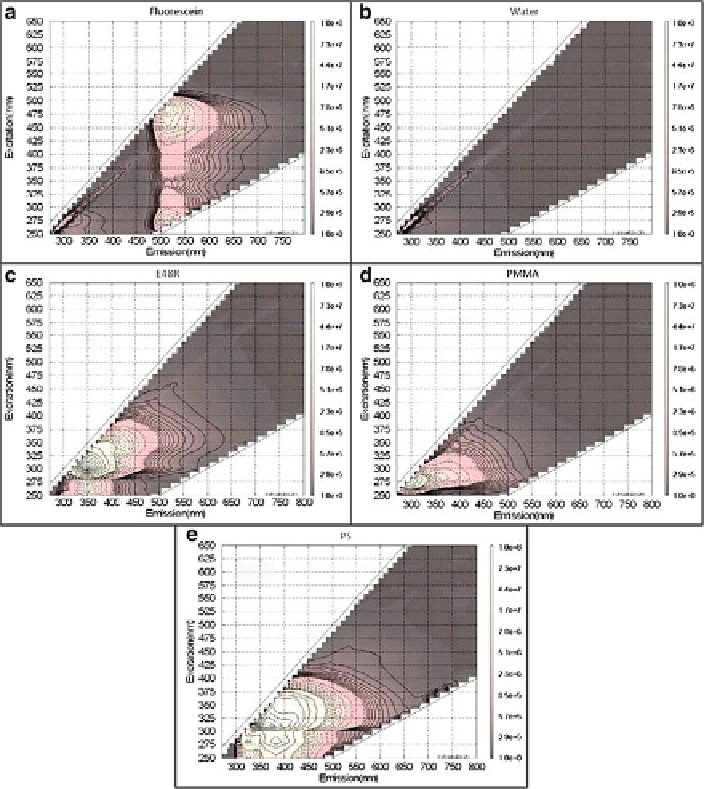Biomedical Engineering Reference
In-Depth Information
Fig. 8.14
The autofluorescence data for selected plastic, water, and fluorescein and three common
optical plastic materials: PMMA, PS, and Zeonex [
60
]
with molding/diamond turning allowed the creation of aspheric surfaces which
significantly reduced the overall system complexity. Lens 4 is simpler than Lens
3 while maintaining the same clear aperture and NA due to the fact that the glass
element (far left) provides high initial power, which is later corrected with two
aspheric, plastic components. Note that the use of plastic materials is more suitable
for longer wavelengths as for the intrinsic autofluorescence of plastics tends to be
far higher for incident light in the 400-500-nm range. The autofluorescence data for
selected plastic, water, and fluorescein is presented in Fig.
8.14
, and the transmission
for three common plastic materials (PMMA, PS, and Zeonex) is shown in Fig.
8.15
.

Search WWH ::

Custom Search